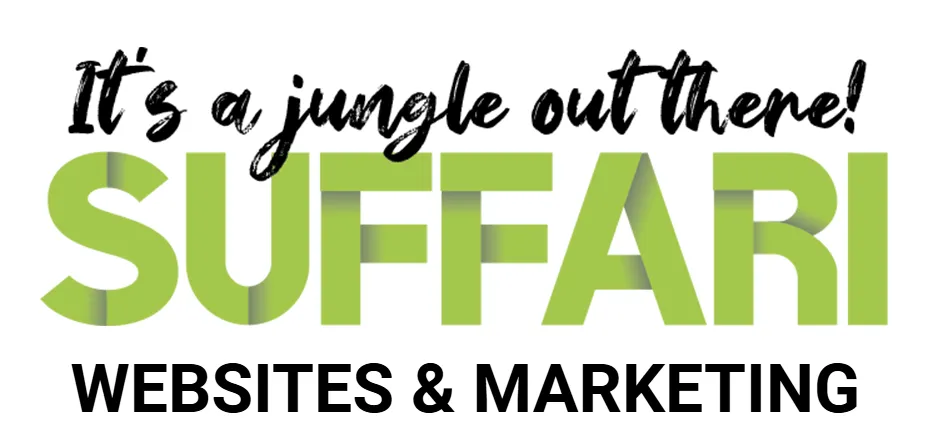
How to Use Popups Without Annoying Visitors - Suffari
Capturing the attention of your website visitors can feel like an uphill battle. Among the numerous strategies available, popups have emerged as a powerful tool for engaging users and driving conversions. However, the fine line between effective communication and overwhelming intrusion is one that many marketers struggle to navigate. Here's how to use popups without annoying visitors.
Table of Contents
Mastering Popups: How to Engage Visitors Without Annoying Them
Understanding the Purpose of Popups
The Psychology Behind Popups: Why They Work
Types of Popups: Timing and Triggers
Designing User-Friendly Popups
Crafting Compelling Popup Content
Best Practices for Popup Placement
Frequency: How Often Should You Show Popups?
A/B Testing Your Popups for Optimal Performance
Mobile Considerations: Popups on Smartphones and Tablets
5 Common Popup Pitfalls to Avoid
Using Exit-Intent Popups Effectively
Integrating Popups with Your Email Marketing Strategy
Analyzing Popup Performance Metrics
Case Studies: Successful Popup Implementations
Mastering Popups: How to Engage Visitors Without Annoying Them
In this blog post, we will delve into the art of mastering popups, exploring innovative techniques to create engaging and user-friendly experiences. We’ll uncover the secrets to designing popups that not only capture attention but also enhance the visitor experience, ensuring you leave a lasting impression without annoying your audience. Whether you're looking to boost newsletter sign-ups, promote special offers, or gather valuable feedback, this guide will equip you with the knowledge and strategies needed to use popups effectively and thoughtfully. Prepare to transform your approach and engage your visitors in ways that feel seamless and enjoyable!
Understanding the Purpose of Popups
Popups have become a staple in the digital marketing toolkit, but their effectiveness hinges on a clear understanding of their purpose. At their core, popups serve as a powerful engagement tool designed to capture the attention of your website visitors at pivotal moments. Whether it’s to promote a special offer, gather email addresses for a newsletter, or guide users toward a specific action, popups are about creating meaningful connections.
However, the key to successful popup implementation lies in their strategic use. Instead of bombarding users the moment they land on your page, which can lead to frustration and immediate exits, focus on timing and relevance. Consider utilizing exit-intent technology that triggers a popup just as a visitor is about to leave your site. This technique capitalizes on those fleeting moments and can significantly reduce bounce rates.
Additionally, think about the value you’re offering. A well-crafted popup should provide something beneficial to the visitor, whether it’s a discount, exclusive content, or helpful resources. When visitors perceive the popup as a value-added element rather than an intrusive interruption, they are more likely to engage positively with your brand.
Ultimately, understanding the purpose of popups means recognizing their potential to enhance user experience rather than detract from it. By being intentional with your design, timing, and messaging, you can create popups that not only capture attention but also foster lasting relationships with your audience. This foundation will set the stage for mastering popups in a way that engages visitors without annoying them.

The Psychology Behind Popups: Why They Work
Popups can often be met with groans and eye rolls, yet when executed thoughtfully, they harness powerful psychological triggers that can effectively engage visitors. Understanding the psychology behind popups can help you create experiences that not only capture attention but also foster positive interactions.
At the core of why popups work is the principle of scarcity. When users see a limited-time offer or a special discount, it taps into the fear of missing out (FOMO). This psychological phenomenon compels visitors to act quickly, prompting them to engage with your content or make a purchase before the opportunity slips away. By leveraging time-sensitive promotions, you can create a sense of urgency that encourages immediate action.
Another key psychological driver is reciprocity. When a visitor is offered something of value, be it an exclusive discount, a free guide, or helpful resources, they often feel a natural inclination to return the favor. This sense of obligation can make them more likely to engage with your brand, whether that means signing up for a newsletter, completing a purchase, or sharing your content with others.
Moreover, the simplicity of a well-designed popup can reduce decision fatigue. In a world overflowing with information, visitors appreciate clarity and ease. A straightforward, visually appealing popup that succinctly communicates its message allows users to quickly understand the offer and the benefits, leading to higher conversion rates.
Lastly, personalization plays a crucial role in enhancing the effectiveness of popups. By tailoring your messages based on user behavior or demographics, you can create a more relevant and engaging experience. When visitors feel that a popup speaks directly to their needs or interests, they are more likely to respond positively.
In summary, when designed with an understanding of psychological principles, popups can transform from an annoying interruption into a valuable tool for engagement, ultimately leading to increased conversions and a loyal customer base. By harnessing the concepts of scarcity, reciprocity, simplicity, and personalization, you can craft popups that resonate with your audience and encourage meaningful interactions.
Types of Popups: Timing and Triggers
When it comes to popups, timing and triggers are key components that can determine whether your visitors find them helpful or intrusive. Understanding the various types of popups and when to deploy them can significantly enhance user experience while effectively capturing leads.
Entry Popups:
These appear as soon as visitors land on your website. While they capture immediate attention, they can be jarring if not used judiciously. Consider implementing a slight delay, allowing visitors to acclimate to your site before the popup appears can create a more welcoming atmosphere.
Scroll-Based Popups:
These popups activate when a visitor scrolls a certain percentage down the page, such as 50%. This approach ensures that the user has engaged with your content, demonstrating interest before presenting them with an offer. It’s a subtle way to catch their attention without interrupting their initial browsing experience.
Exit-Intent Popups:
Perhaps one of the most effective types, exit-intent popups are triggered when the user’s cursor moves toward the close button or the browser tab. This serves as a last-minute opportunity to capture a lead or present a special offer just before a visitor leaves your site. It can effectively reduce bounce rates and turn potential exits into conversions.
Time-Based Popups:
Setting your popups to appear after a visitor has spent a specific amount of time on your site can be an excellent strategy. This allows them to explore your offerings fully and only then receive a tailored message, such as a discount code or an invitation to subscribe to your newsletter.
Interaction-Based Popups:
These popups can be triggered after a visitor has interacted with specific elements on your page, be it clicking on a product, reading a blog post, or engaging in any other meaningful way. This method ensures your message is contextually relevant, enhancing the likelihood of conversion.
By thoughtfully considering the timing and triggers of your popups, you can create a seamless experience for your visitors. The goal is to engage but not overwhelm, ensuring that your popups serve as valuable touchpoints rather than annoying interruptions.
Designing User-Friendly Popups
Designing user-friendly popups is crucial for creating an engaging experience that resonates with your visitors rather than driving them away. The key to successful popup design lies in balancing aesthetics with functionality. Start by ensuring that your popups are visually appealing but not overpowering. Use a clean, modern design that aligns with your brand's identity, incorporating colors and fonts that complement your overall website theme.
Next, consider the placement of your popups. Position them where they can be easily seen but won’t obstruct the user’s main content. For example, a corner popup or a slide-in from the side can capture attention without overwhelming the viewer. Timing is also essential; avoid displaying popups immediately upon page load, as this can frustrate visitors. Instead, consider setting a delay or triggering the popup based on user behavior, such as scrolling down the page or lingering for a certain amount of time.
Content is just as important as design. Ensure that your message is clear, concise, and compelling. Use engaging language that communicates value, be it a discount, exclusive content, or a compelling call to action. Make it easy for users to close the popup if they’re not interested. A simple 'X' button or a clear dismissal option should be prominently displayed.
Finally, test different designs and strategies to find what resonates best with your audience. A/B testing can provide invaluable insights into which elements work best, allowing you to refine your approach continuously. By prioritizing user-friendly design, you can create popups that engage visitors, enhance their experience, and ultimately drive conversions without the annoyance that often comes with traditional popup implementations.

Crafting Compelling Popup Content
Crafting compelling popup content is both an art and a science. The key lies in delivering messages that resonate with your audience while ensuring that the experience feels seamless rather than intrusive. To begin, focus on clarity and conciseness; your visitors should grasp the essence of your message within seconds. Avoid jargon and overly complex language, simplicity is your best friend.
What's your purpose?
Consider the purpose of your popup. Are you offering a discount for first-time visitors? Promoting a new product? Or perhaps inviting users to subscribe to your newsletter? Each scenario requires a tailored approach. Use engaging headlines and a friendly tone that reflects your brand's personality. For instance, instead of a bland “Sign Up for Our Newsletter,” try something more inviting like “Join Our Community for Exclusive Offers and Insights!”
Using Visual Elements Properly
Visual elements also play a crucial role in compelling popup content. Use eye-catching colors and images that align with your branding, but don’t go overboard. A clean, attractive design will draw the eye without overwhelming the visitor. Additionally, incorporating a sense of urgency or exclusivity can spur action. Phrases like “Limited Time Offer!” or “Join Today to Unlock Exclusive Benefits!” create a fear of missing out (FOMO) that encourages immediate engagement.
Include a Call To Action
Lastly, don’t forget to include a clear call-to-action (CTA). Whether it’s a button that reads “Get My Discount” or “Subscribe Now,” your CTA should be prominent and inviting. By combining well-crafted content with strategic design elements, you can create popups that engage visitors effectively, enhancing their experience and driving conversions without crossing the line into annoyance.
Best Practices for Popup Placement
When it comes to popups, placement is everything. A well-placed popup can enhance user experience and drive conversions, while a poorly positioned one can disrupt the flow of browsing and lead to frustration. Here are some best practices to consider when determining where to place your popups for maximum effectiveness without being intrusive.
Timing is Key:
One of the most effective strategies is to delay the appearance of your popup. Instead of bombarding visitors with a popup the moment they land on your site, set a timer for a few seconds. This gives them time to engage with your content and creates a more natural transition into the popup. A common practice is to wait for about 30 seconds or until the user scrolls halfway down the page before displaying the popup.
Exit-Intent Technology:
Utilize exit-intent popups that trigger when a user is about to leave your site. This method captures the visitor's attention at a critical moment, offering them an incentive to stay or return, such as a discount code or exclusive content. By targeting users who are already on their way out, you can salvage potentially lost conversions.
Corner Placement:
Instead of placing your popup in the center of the screen, which can be disruptive, consider positioning it in a corner. Corner popups are less intrusive and allow users to continue reading or browsing without a significant interruption. This subtle approach enhances user experience while still delivering your message.
Mobile Optimization:
With a significant amount of web traffic coming from mobile devices, ensure that your popups are optimized for smaller screens. A well-designed mobile popup should be easy to close, not cover the entire screen, and provide a seamless experience as users navigate your site.
Frequency Capping:
Avoid overwhelming visitors by setting frequency caps on how often a particular user sees the same popup. This not only reduces annoyance but also helps in maintaining a positive relationship with your audience. For instance, if someone closes your popup, they shouldn't be bombarded with it again during the same session.
By thoughtfully considering popup placement and employing these best practices, you can create an engaging experience for your visitors. The goal is to enhance their journey on your site, providing value without causing disruption. When done correctly, popups can be a powerful tool in your engagement strategy, driving conversions while keeping your visitors happy.
Frequency: How Often Should You Show Popups?
When it comes to popups, frequency is a critical factor that can make or break user engagement. Show them too often, and you risk annoying your visitors, pushing them away rather than drawing them in. Conversely, if the timing is too sparse, you may lose valuable opportunities to capture leads or promote special offers. Striking the right balance is essential for mastering the art of popups.
A good rule of thumb
A good rule of thumb is to avoid presenting the same popup to a visitor more than once during their session. This helps maintain a positive user experience, allowing them to explore your content without feeling overwhelmed by constant interruptions. For example, if a visitor dismisses a signup popup once, it should not reappear until they return to your site on a different day, this provides them with a sense of control and respects their choices.
Additional Considerations
Additionally, consider implementing a delay before your popup appears. Waiting for at least 30 seconds or until the user has scrolled down a certain percentage of the page can help ensure that they are genuinely engaged. This timing allows visitors to absorb some of your content before being prompted to take action, making them more likely to respond positively.
Popups for Returning Visitors
For returning visitors, a slightly different strategy can be beneficial. After they’ve already interacted with your site, you might want to show them a different popup after several visits, perhaps offering a special discount or reminding them of items they left in their cart. This approach not only keeps your brand fresh in their minds but also incentivizes them to return and engage further.
Ultimately, the key to effective popup frequency lies in testing and analyzing visitor behavior. Utilize A/B testing to determine the optimal timing and frequency that resonates best with your audience. By being mindful of how often you show popups, you can foster a more inviting browsing experience that keeps your visitors coming back for more.
A/B Testing Your Popups for Optimal Performance
A/B testing your popups is a crucial step in mastering their effectiveness while ensuring a positive user experience. It allows you to experiment with different designs, messaging, and triggers to determine what resonates best with your audience. Instead of relying on a one-size-fits-all approach, A/B testing empowers you to make data-driven decisions that can significantly enhance your conversion rates.
Start by creating two variants of your popup, each with slight adjustments. This might include variations in the headline, the color scheme, or the call-to-action button. For example, you might test a bold, attention-grabbing offer against a more subtle, value-driven message. By segmenting your traffic evenly between the two versions, you can gather insights into which popup draws more engagement.
Timing and triggers are also key elements to test. Consider experimenting with different activation points. Does your audience respond better to a popup that appears after a few seconds of browsing, or one that appears when they are about to exit the site? You might be surprised by the results. By analyzing metrics such as click-through rates, conversion rates, and even exit rates, you can refine your popups to maximize their effectiveness.
Additionally, don’t forget to consider the user experience when conducting your tests. While it’s essential to find the most effective popup, it’s equally important to ensure that your visitors feel valued and not overwhelmed. A/B testing not only helps you understand what works best but also fosters a culture of continuous improvement in your engagement strategy. By regularly iterating based on user feedback and performance data, you can create popups that inform, entice, and ultimately convert without becoming a nuisance.
Mobile Considerations: Popups on Smartphones and Tablets
In an increasingly mobile-first world, optimizing your popups for smartphones and tablets is not just an afterthought, it's a necessity. With more than half of all web traffic now coming from mobile devices, ensuring that your popups are user-friendly on these platforms can significantly affect your engagement rates and overall user experience.
When designing popups for mobile, keep in mind that screen real estate is limited. A large, intrusive popup can overshadow your entire webpage, leading to frustration and potential abandonment. Instead, opt for smaller, more subtle designs that don’t overwhelm the user. Consider using slide-in popups or banners that gracefully appear at the bottom of the screen rather than taking over the entire display. This method allows your content to remain visible while still capturing the visitor’s attention.
Moreover, timing is crucial. On mobile, users are often on the go, making it essential to present your popups at the right moment. Triggering a popup immediately upon landing on a page can be jarring; instead, consider delaying the appearance until the user has had a chance to engage with your content. A common strategy is to wait until the visitor scrolls down a certain percentage of the page or spends a specific amount of time on it. This approach demonstrates that you respect their browsing experience and are not just bombarding them with requests.
Another key consideration is the ease of interaction. Mobile users should be able to dismiss popups with a simple tap, ideally, a clearly marked “X” in the corner of the popup. Also, ensure that any call-to-action buttons are large enough to tap easily without the risk of hitting adjacent links. Remember that simplicity is key; a straightforward design not only enhances usability but also encourages visitors to take the desired action, be it signing up for a newsletter or accessing a special offer.
Lastly, don’t forget to test your popups across various devices and screen sizes. What works well on one device may not translate effectively to another. By gathering data on user interactions with your mobile popups, you can continuously refine your approach, ensuring that your popups serve as an engaging tool rather than a source of annoyance. By prioritizing mobile considerations, you can create a seamless experience that keeps visitors coming back for more.

5 Common Popup Pitfalls to Avoid
When it comes to implementing popups on your website, avoiding common pitfalls can make all the difference between engaging visitors and driving them away. Here are some key mistakes to sidestep:
1. Timing is Everything
One of the most significant blunders is displaying a popup too soon. If your visitors are greeted with a popup the moment they land on your site, they may feel overwhelmed and exit immediately. Instead, consider setting a delay or triggering the popup based on user behavior. For example, wait until a visitor has spent a certain amount of time on your page or is about to exit. This shows respect for their experience and increases the likelihood they'll engage with your offer.
2. Being Too Pushy
While it’s essential to promote your offerings, aggressive tactics can backfire. Avoid using language that pressures visitors into making a decision. Instead of “Buy Now!” or “Sign Up Immediately!” opt for softer calls to action, such as “Discover More” or “Join Our Community.” This approach encourages exploration rather than coercion, fostering a sense of trust between your brand and the visitor.
3. Ignoring Mobile Users
In an increasingly mobile world, ensuring that your popups are mobile-friendly is crucial. Popups that are too large or difficult to close on a mobile device can frustrate users and lead to high bounce rates. Design your popups with responsive elements that adapt to different screen sizes, and consider using slide-ins or bottom banners instead of traditional popups for a less intrusive experience.
4. Forgetting the Exit Option
Never underestimate the importance of giving your visitors an easy way to close your popups. If users feel trapped by a popup they can’t easily dismiss, they are likely to leave your site in frustration. Include a clearly visible “X” button or a “No Thanks” option, allowing them to continue browsing without hassle. This simple gesture can enhance user experience and keep visitors coming back.
5. Neglecting A/B Testing
Finally, don’t skip the crucial step of A/B testing your popups. Experiment with different designs, messages, and triggers to understand what resonates best with your audience. By analyzing performance metrics, you can refine your approach, ensuring your popups are not just effective, but also aligned with your visitors' preferences.
By avoiding these common pitfalls, you can create popups that enrich your visitors' experience rather than detract from it. Thoughtfully designed popups can become valuable tools for engagement, conversion, and ultimately, building lasting relationships with your audience.
Using Exit-Intent Popups Effectively
Exit-intent popups are a powerful tool in your digital marketing arsenal, designed specifically to capture the attention of visitors just as they are about to leave your site. These intelligent popups detect mouse movement patterns, if a user’s cursor moves toward the top of the screen, indicating they’re likely to close the tab or navigate away, the popup triggers. But how can you use exit-intent popups effectively without alienating your audience?
First and foremost, the timing and context of your popup matter immensely. Instead of bombarding users with a popup the moment they land on your site, reserve this tactic for those moments when they show signs of exiting. This ensures that your message is relevant and timely, giving you one last chance to engage them before they leave.
Next, consider the content of your exit-intent popup. This is your opportunity to make a compelling offer or provide valuable information that addresses a potential concern. For example, you might offer a discount code, free shipping, or exclusive content in exchange for their email address. Make sure the message is clear, concise, and visually appealing, as aesthetics can greatly influence a user’s decision to stay or go.
Additionally, personalize your approach. If your website tracks user behavior, tailor the popup content based on the pages users visited. For instance, if someone was browsing a specific product, highlight related items or remind them of the unique benefits of what they were considering. By personalizing the experience, you not only increase the likelihood of conversion but also show your visitors that you understand their interests and needs.
Lastly, don’t forget about providing an easy way for users to close the popup. A clear “X” or “No, thank you” button respects their choice and prevents them from feeling trapped. The goal is to create a positive experience that encourages users to reconsider leaving, rather than turning them away with aggressive tactics.
When executed thoughtfully, exit-intent popups can significantly reduce bounce rates, recapture potential lost sales, and ultimately turn hesitant visitors into loyal customers. By focusing on timing, content, personalization, and user-friendliness, you can harness the full potential of this powerful engagement tool without annoying your audience.

Integrating Popups with Your Email Marketing Strategy
Integrating popups with your email marketing strategy can be a game-changer for your online business, creating a seamless bridge between engaging content and effective lead generation. When done correctly, popups can capture the attention of your visitors at the right moment, inviting them to subscribe to your newsletter, receive exclusive discounts, or gain access to valuable resources. The key lies in timing, design, and messaging.
Imagine a visitor browsing your website, intrigued by the products or services you offer. At just the right moment, perhaps when they’re about to leave the page or after they’ve spent a certain amount of time on your site, a well-timed popup appears, gently encouraging them to join your email list. This approach not only captures potential leads but also boosts your email marketing efforts, allowing you to nurture these contacts with tailored content and promotions.
To enhance the user experience, ensure your popups are visually appealing and aligned with your brand’s aesthetics. Use a compelling message that speaks directly to your audience's needs and desires. For instance, instead of a generic “Join our mailing list,” try a more enticing offer like, “Unlock 10% off your first purchase by subscribing now!” This creates an incentive that feels more valuable to the visitor.
Moreover, consider segmenting your popups based on visitor behavior. If someone has shown interest in a specific product category, craft a message that highlights related content or special offers. This personalized approach not only increases the likelihood of conversions but also fosters a stronger connection with your audience.
Finally, don’t forget to analyze the performance of your popups. Use A/B testing to experiment with different designs, timings, and messaging to determine what resonates best with your audience. By fine-tuning your strategy based on real data, you can maximize your email capture rates while ensuring that your popups remain a welcome addition to the user experience, rather than a disruptive annoyance. When integrated thoughtfully into your email marketing strategy, popups can transform casual visitors into loyal subscribers, driving engagement and sales for your business.
Analyzing Popup Performance Metrics
When it comes to mastering popups, analyzing performance metrics is an essential step that can make or break your engagement strategy. Once you've implemented your popups, it’s crucial to monitor their effectiveness to ensure they're delivering the desired results without overwhelming your visitors.
Start by examining key metrics such as conversion rates, click-through rates, and exit rates. Conversion rates will tell you how many visitors are taking the desired action after interacting with your popup, be it signing up for a newsletter, downloading a guide, or making a purchase. A high conversion rate indicates that your popup resonates well with your audience, while a low rate might suggest that your message isn't compelling enough or your timing is off.
Click-through rates give insight into how many users engage with the popup itself. If you notice that many visitors are dismissing your popup without engaging, it may be time to reassess your design, messaging, or placement. Perhaps the offer isn’t enticing enough, or the popup appears too early or too late in the visitor's journey.
Don’t forget to examine exit rates as well. If you see a spike in exits immediately after a popup appears, that’s a clear sign that your approach may need refinement. Consider A/B testing different designs, messages, or timing strategies to find the sweet spot that maximizes user engagement without causing frustration.
Additionally, leveraging tools like Google Analytics or dedicated popup software can provide deeper insights into user behavior and preferences, enabling you to make data-driven decisions. Regularly reviewing these metrics will help you fine-tune your popups, ensuring they effectively engage visitors and enhance their experience on your site.
In summary, analyzing popup performance metrics is not just about tracking numbers; it’s about understanding your audience better and creating an experience that adds value rather than detracts from it. By continuously refining your approach based on empirical data, you can transform your popups from mere distractions into powerful tools for engagement and conversion.
Case Studies: Successful Popup Implementations
When it comes to mastering popups, learning from those who have successfully navigated the delicate balance between engagement and annoyance is invaluable. Here, we delve into a few noteworthy case studies that exemplify effective popup strategies, showcasing how various brands have harnessed the power of popups to enhance user experience and drive conversions without irritating their visitors.
One standout example is Shopify, an e-commerce platform that employs smartly timed popups to capture leads and promote special offers. By using exit-intent technology, Shopify displays a friendly popup when it detects that a visitor is about to leave the site, offering them a discount on their first purchase. This approach not only reduces bounce rates but also encourages potential customers to stay and complete their transactions, resulting in a significant increase in conversions.
Another remarkable case is The New York Times, which has successfully implemented subscription popups. Unlike intrusive banners, their popups are elegantly designed and appear after a user has spent some time reading an article. This strategy respects the user’s browsing experience and offers a compelling reason to subscribe, access to premium content, without disrupting their engagement. The result? A notable rise in subscription sign-ups and a strengthened relationship with their audience.
Meanwhile, Moosend, an email marketing automation platform, has capitalized on the power of gamification in their popups. By introducing an interactive spinning wheel, they entice visitors to enter their email addresses for a chance to win discounts or freebies. This engaging approach not only captures leads in a fun way but also fosters a sense of excitement around their brand. The implementation of this popup led to a remarkable spike in their email list growth and overall customer engagement.
These case studies illustrate that when implemented thoughtfully, popups can serve as powerful tools for engagement rather than sources of frustration. By carefully considering timing, design, and value, brands can create popups that resonate with users, turning casual visitors into loyal customers. As you develop your own popup strategy, let these examples guide you in creating experiences that enchant rather than annoy.
Striking the Balance Between Engagement and Annoyance
In the world of online engagement, popups can be a double-edged sword. When executed effectively, they can significantly enhance user experience, capture valuable leads, and boost conversions. However, when mismanaged, they can quickly turn into an irritant, causing visitors to abandon your site in frustration. The key to mastering popups lies in striking a delicate balance between engagement and annoyance.
To achieve this balance, it’s essential to be strategic about the timing, frequency, and content of your popups. Consider implementing exit-intent popups that appear when a user is about to leave your site, this approach allows you to capture their attention just before they make a decision to go. Additionally, be mindful of how often your popups appear. Too many interruptions can lead to a negative experience, so a thoughtful approach that prioritizes user comfort is crucial.
Moreover, the content of your popups plays a significant role in their effectiveness. Ensure that every message is relevant, valuable, and tailored to the visitor's needs. Whether promoting a limited-time discount, offering educational resources, or encouraging newsletter signups, your popups should enhance the user journey rather than detract from it.
Ultimately, the goal is to create an experience that feels seamless and intuitive. By focusing on user-centric strategies and continuously optimizing your approach based on feedback and analytics, you can engage visitors in a meaningful way while minimizing the risk of annoyance. Remember, a well-placed, thoughtfully crafted popup can be a powerful tool in your digital marketing arsenal, when done right, it can turn casual browsers into loyal customers.
Wrapping up
In conclusion, mastering the art of popups is all about striking the right balance between engagement and user experience. By implementing the strategies discussed in this post, such as timing, targeting, and providing genuine value, you can create popups that enhance your website rather than detract from it. Remember, when done thoughtfully, popups can be a powerful tool for guiding your visitors toward meaningful interactions and conversions. As you embark on your journey to refine your popup strategy, keep your audience’s needs at the forefront and watch as your engagement rates soar without causing frustration. If you'd like help adding popups to your current website, sign up for a free website consultation, and we'll add one for you free of charge while on the call. Happy popping!























Youtube